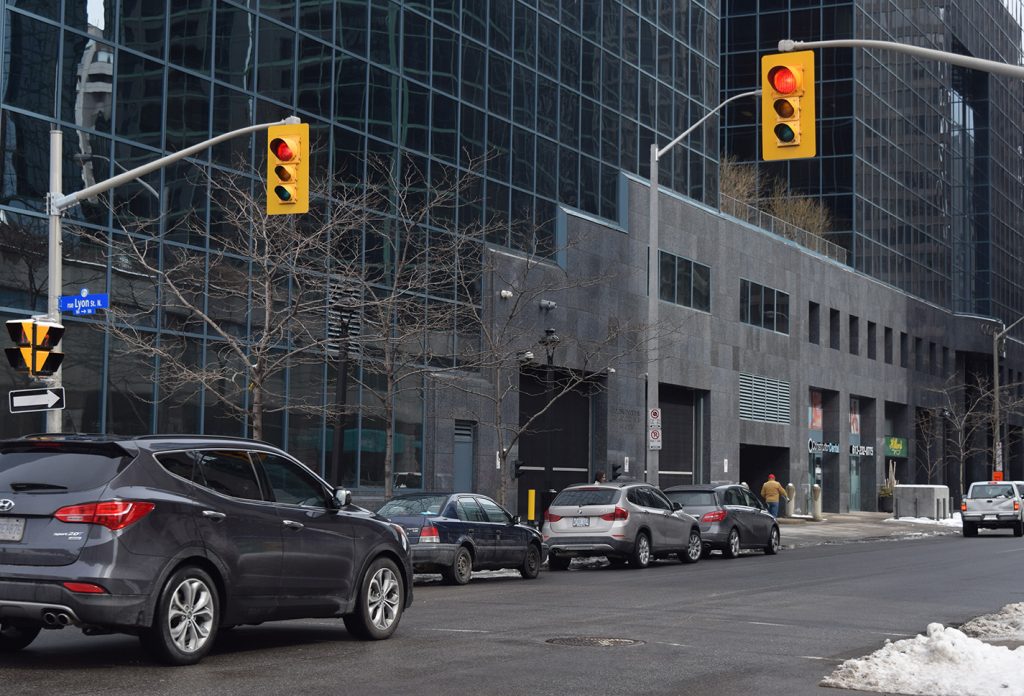Core gets new red-light cameras
By Kaitlin Fisher
Six intersections in Centretown will be getting new red-light cameras as part of a city-wide plan to install 20 of the devices.
The new cameras, intended to deter dangerous driving and prevent accidents, will be installed at Arlington Avenue at Kent Street, Bay Street at Slater Street, Catherine Street at Kent, Elgin Street at Slater, Gladstone Avenue at Rochester Street and Lyon Street at Slater Street.
Rob Wilkinson, the coordinator of the Safer Roads Ottawa program, said he is supportive of the city’s decision to increase the number of cameras.
“There is a problem, generally speaking, with people running red lights and then, obviously, causing collisions, which in some cases lead to fatalities or very, very serious injuries,” Wilkinson said. “The reality is that the angle collisions that red-light cameras help prevent are some of the most catastrophic.”
“Collisions resulting from red-light running tend to be more severe than other collisions because they usually involve at least one vehicle travelling very quickly and colliding with another vehicle at a right angle,” said Phil Landry, director of Traffic Services.
Wilkinson said he is hopeful the installation of the cameras will reduce these kinds of collisions.
“We know, for the most part, that it does cut down on angle collisions because drivers are made aware that they shouldn’t blow through red lights… and if they do, then there’s going to be a consequence,” he said.
Traffic Services reviewed collisions at intersections that occurred between 2012 and 2015 to determine the locations for the cameras.
According to Landry, red-light cameras are being installed at locations with “an average of three or more angle collisions due to red light running per year; and/or, five or more angle collisions due to red light running in one direction during the four-year period.”
Those who run a red light will be hit with a fine of $260 plus a $5 service fee and a $60 victim surcharge. All camera locations will be signed to warn drivers.
According to the City of Ottawa website, studies show that red-light violation rates can decrease by as much as 42 per cent within just a few months of camera installation.
Alex Ambeault lives on Elgin Street and often drives in the area. She said she’s not a huge fan of the red-light cameras, because the automated camera system “dehumanizes” the process of being ticketed. Additionally, she said drivers might become too cautious if they know there are red-light cameras in the area.
“Having people that are overly cautious drivers isn’t great, like when they’re driving too slow or not keeping up with traffic. Or maybe they’re too concerned about the red-light cameras to notice pedestrians,” Ambeault said.
One issue that Wilkinson acknowledged may come up as a result of the cameras is an increased number of rear-end collisions as drivers stop more abruptly when a light is set to turn red.
He said rear-end collisions are the result of drivers following one another too closely.
“If you’re following too close, you’re then obviously not going to have enough time to react and stop your vehicle,” he said.
In an attempt to prevent a rise in rear-end collisions, Wilkinson said the city will roll out an awareness campaign focusing on the importance of allowing more distance between vehicles.
“The vision for the Safer Roads Ottawa program is Towards Zero, and that’s towards zero fatal collisions and towards zero injuries relating from those collisions,” he said.
Wilkinson added that the installation of the cameras will “hopefully continue to move our program toward that vision of getting to zero.”
The city’s approved an $800,000 budget allocation for the new cameras.
If all goes as planned, Ottawa will have a total of 54 red-light cameras by the end of 2017.

